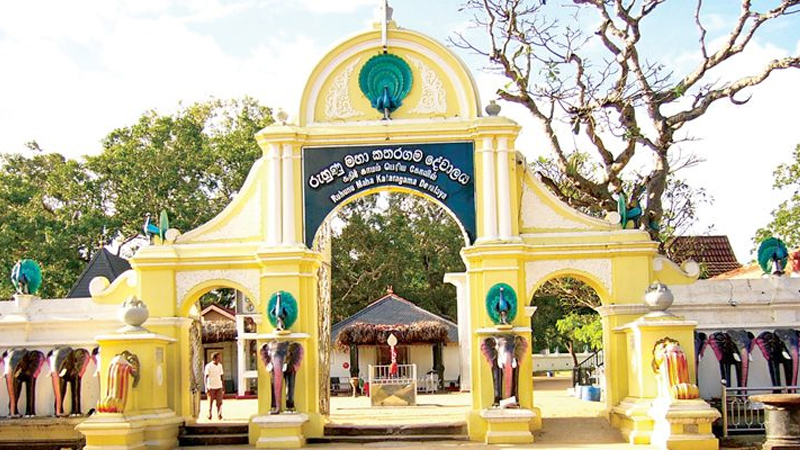Kataragama is one magical destination where the most bizarre kind of legends become popular and clouds of aroma carry magic within them! In this enchanted city, it is believed that King Dutugemunu constructed a shrine for Kataragama Deviyo (the resident God – according to Buddhists) in the 2nd century BC. But the location apparently holds significance since much longer!
Busiest times in Katargama, in terms of pilgrims, are weekends and poya (full moon days). Just like in other parts of Sri Lanka, Kataragama also has its seasons for pageantry, ceremony and rituals. If your round tour of Sri Lanka brings you to the south during the latter part of July, you will have the opportunity to observe the most spectacular pageant in Sri Lanka: the Kataragama Esala Festival, also known as “Pada Yatra’. It usually begins in July and the rituals here are to pay homage to God Skanda and the full moon poya of Esala.
Hindu devotees march into the Kataragama Devale in groups chanting “Haro Hara, Haro Hara” with baskets of offerings in their hands. Just outside the religious premises, a range of articles (Pooja Bhanda) are available – most often in an assortment of fruits used for the purpose of offerings. Based on the size of fruit basket and fruits that you select, prices vary. A common item seen is a
garland of red flowers made from polythene. Anyone who goes to visit the Maha Devale (main shrine) carries offerings of some sort or the other.
Buddhist pilgrims are seen at a sacred site alongside the Devale, where a Bo tree and a temple exist. Muslims also have a separate mosque in the area that attract devotees.
This sanctuary is located on the bank of the Menik River (River of Gems) – believed to be the Holy River for thousands and thousands of devotees in Sri Lanka. About 4kms south of the holy shrine, you can see the Seven Hills of Kataragama, also known as Vedihiti Kanda. The Kataragama Deviyo, often spoken about, is actually the Holy Peak of Kataragama. The sacred God here is known as God Karellakeya, hence the place being called Karatheyagram, later shortened to Kataragama.
Not very long ago, Kataragama was a small jungle village, about 19kms away from the more popular city of Tissamaharama. There was a transformation when a proper motorway was constructed leading to Kataragama, electricity was introduced and so was the steady supply of water to the area. This was more of a Village Reawakening project launched in the late 1980s by the then President of Sri Lanka. Now it is a busy and bustling town with pilgrims pouring in and several vendors lined up with their colorful offerings.
Kataragama Deviyo is said to have six heads, twelve hands and feet, and is believed to be constantly riding on a peacock. Blessings from the Kataragama Deviyo are seeked by Hindus and Buddhists for:
- Success in worldly affairs
- Relieving distress
- Healing diseases
Other names for this religious shrine are:
- Kandaswamy by the Tamils
- Kartikaya – God of War (in Hindu mythology)
- Skanda
- Kanda Kumara
Common sightings in Kataragama religious zone:
- Making of vows to fulfill a lifelong need, to seek amends from a problem or to cure an illness.
- Breaking a coconut as an act of homage to the Gods, to show gratitude, or to settle a vow.
- Resorting to extreme physical pain to beg a favor from God.
- Large number of hooks inserted through bare flesh around the area of their shoulders.
- Red hot embers on naked feet
Pada Yatra (Kataragama Esala Festival)
This is an annual pilgrim walk that has been taking place for centuries. Beginning from Jaffna peninsula in the North, going down the east coast, through the jungles of Kumana East National Park and then ends at Kataragama. Hindu devotees gather for their rituals at the Murugan Devale in Okanda.
Starting in July every year, this spiritual walk has over thousands of devotees participating and it lasts for about 45 days in total, with 15 days being the deeply sacred time where devotees exhibit their talents and red hot embers of the like. Something definitely worth the watch, hence Kataragama is most often included in cultural tours of Sri Lanka and any round tour scheduled during the festival period, provided the customeris interested in the event.

